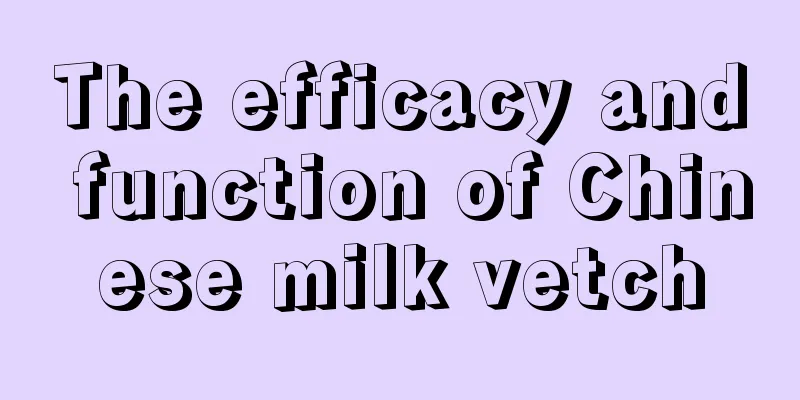Give the flowers some of this water, and their roots will not rot for 10 years, and small buds will sprout!

Give the flowers some potassium permanganate, and the roots will not rot for 10 years!Potassium permanganate is a recognized fungicide, but many people only know that it can be used to disinfect breeding environments such as fish, pigs, and chickens. They don’t know that it can also be used to disinfect flowers and prevent root rot, which is great! How does potassium permanganate prevent root rot? 1. Prepare potassium permanganate, either in tablet or liquid form. 2. Prepare potassium permanganate and clean water in a ratio of 1:800 and mix well. 3. Pour potassium permanganate water into the potting soil and water the roots of the flowers 1-2 times a month. This can effectively prevent soft rot, sudden wilt disease, etc., and prevent the roots of the flowers from rotting. 4. In addition to preventing root rot, potassium permanganate can also treat root rot. When the plant's roots are rotten, trim off the rotten roots, soak them in 0.2% potassium permanganate solution for 20 minutes, take them out and dry them, then you can replant them in the soil! Give the flowers some aspirin, so their roots will be strong and they won’t get sick.Aspirin is a small pill commonly used in flower cultivation. It not only promotes flowering and prevents bud drop, but more importantly, it can enhance the resistance of flowers, make the root system of flowers stronger, and prevent the occurrence of black rot and soft rot. How does aspirin prevent root rot? 1. Take an aspirin and crush it into powder using a tool. The finer the better and it will dissolve faster. 2. Pour the aspirin powder into a plastic bottle, add about 1 kg of clean water, about the amount of water in a mineral water bottle, shake and stir evenly. 3. Water the flowers with aspirin water once a month, and the roots of the flowers will basically not rot. Especially in the summer when black rot is most prevalent, watering is necessary. Throw a piece of metronidazole into the bottle and the roots of hydroponics will never rot.In summer, if you smell a stink in the bottle of hydroponics, it basically means the roots are rotten. This is because the weather is too hot, and the roots will rot if they are exposed to the sun for a little bit or the water is not changed in time. If you want to prevent the roots from rotting, you can throw in some metronidazole. How does metronidazole prevent root rot? 1. Take a piece of metronidazole and crush it into small pieces. 2. Take the metronidazole into pieces the size of rice grains and throw them into the hydroponic bottle! 3. Metronidazole can cure anaerobic bacterial infections. Putting it into water can inhibit the production of bacteria in the water. Even if the water is not changed for a long time in hydroponics, the roots will not rot. Water the soil with carbendazim and your flowers will never have root rot again!Carbendazim is often used in flower cultivation. It can not only be used to disinfect branches and bulbs when flowers are cut, but also to disinfect soil, flower pots, etc., greatly improving the survival rate of flowers and reducing black stems and root rot. How does carbendazim prevent root rot? 1. Mix carbendazim powder and clean water in a ratio of 1:1000, mix evenly, and spray it into the potting soil 1-2 times a month to effectively prevent root rot. 2. In addition to adding water, carbendazim can also be stirred into the soil. Mix it in the ratio of carbendazim powder: soil = 1:10000. Using soil mixed with carbendazim to grow flowers can also effectively prevent root rot. |
<<: How to grow lucky bamboo after it takes root
Recommend
Is Tiger Eye Evergreen poisonous? Can it be eaten?
Is Tiger Eye Evergreen poisonous? It should be no...
How to prune Jade Plant?
Jade Plant is an ornamental plant with fleshy, sm...
The difference between millstone grass and ramie
1. Leaf Difference The leaves of the grinding whe...
Disease and Pest Control of Primula oleracea
Mosaic This disease will harm the entire plant. I...
The fastest way to root the cuttings of the swallowtail palm
Time for cuttings of Swallow Palm The cuttings of...
How to breed Huang Qiuying
Seed propagation They have good adaptability and ...
Add some of it in the hydroponic bottle, the leaves won’t turn yellow or the roots will rot, and the plant will grow rapidly!
Add stones to the hydroponic bottle to fix the ro...
How to grow the lucky tree indoors to make it more vigorous?
The lucky tree is an evergreen plant all year rou...
When is the best time to sow octagonal melon?
Suitable time for planting eight-angle melon The ...
The efficacy and function of red scale syzygium
Greening value The red-scaled syzygium is a plant...
Can bamboo cypress be hydroponically cultivated?
Can bamboo cypress be hydroponically cultivated? ...
How to take care of the newly bought red flower jade
1. Lighting The red flower jade likes to bask in ...
Which month is suitable for planting sugar apple?
When is Custard Apple planted? Sugar-apple is usu...
Can cactus be hydroponically cultivated? Hydroponics cultivation methods and precautions
Can cactus be grown hydroponically? Cactus can be...
Common varieties of pumpkin
The first type: honey pumpkin It is a hybrid vari...









